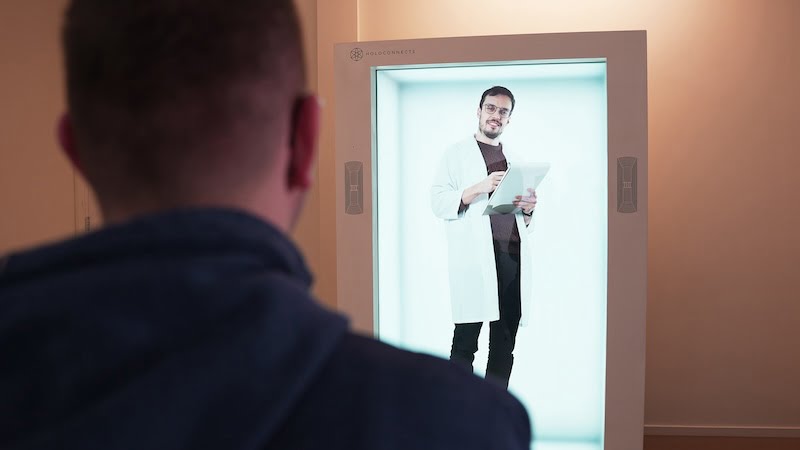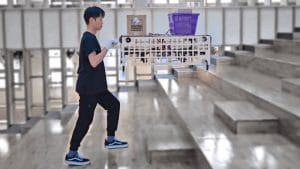
With a so-called holobox, people from anywhere in the world can theoretically be connected digitally on a screen – even if they have already died. A British university now wants to use this technology in lecture halls.
Lessons from Albert Einstein or Marie Curie in person instead of just from the textbook? What sounds far-fetched is now theoretically possible with the help of holoportation technology – or more precisely, with a so-called holobox.
Holobox: This is how dead people come back as holograms
The Holobox was developed in collaboration between the US companies Proto and Holoconnects. The two meter high and 1.40 meter wide box can display visualizations of people, products or logos.
This is previously recorded video material from the studio that was post-processed using AI technology and 3D software. Alternatively, people can be broadcast live and in real time from any camera or mobile phone. This creates content that is projected in life size on a transparent LCD screen – and appears like holograms.
David Nussbaum founded Proto four years ago after working on holograms for dead celebrities. Opposite The Guardian he said that his company would soon raise some of the greatest minds of the 20th century from the dead.
He believes Proto has the technology to project an image of the late physicist Stephen Hawking or another human and make it appear as if they were really there.
“We can connect it to books, lectures, social media – everything that had to do with him, every question, every interaction with him. A Stephen Hawking AI would look like him, sound like him, and interact like he was.”
British university uses hologram box in lectures
If you look at the possible uses, it hardly seems surprising that the holobox has long since found its way into the lecture hall. US universities already use the technology regularly. The University of Loughborough in Leicestershire, England is now the first European university that wants to use the Holobox in teaching. However, she is initially concentrating on living lecturers.
“The device enables live broadcasting from anywhere in the world for real-time, interactive learning experiences, expanding opportunities for teaching and research while reducing carbon pollution,” the university said in a blog post.
In the future, guest speakers from universities and industry around the world could also speak live in lectures, give lectures and answer questions from students.
After a year of testing, the technology is expected to be officially included in the curriculum in 2025. And who knows, perhaps British students will also have the opportunity to attend seminars by Albert Einstein in the future.
Also interesting:
Source: https://www.basicthinking.de/blog/2024/01/28/holobox-ki-hoersaal/


